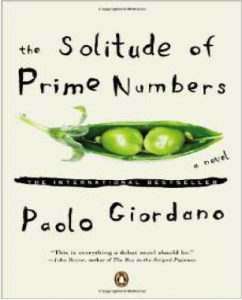Primal Emotions: Author and physicist Paolo Giordano uses a mathematic principle as a metaphor for the human condition
A man whose mind has gone astray should study mathematics,” said philosopher Francis Bacon, pointing out a strict relationship between mathematical thought and that kind of extraordinary, sometimes borderline, sensitivity that is commonly associated to poetry. That must be the case of Paolo Giordano, a 27-year-old Italian scientist working on a doctorate in particle physics, who has recently won five literary awards – included the prestigious Premio Strega, Italy’s answer to the Man Booker Prize – with his bestselling debut novel The Solitude of Prime Numbers.
Giordano is the youngest author to have received such literary recognition. Since publication in Italy (Mondadori, 2008), the book has sold over 1 million copies, and is being translated into twenty languages, becoming a cult phenomenon.

The worldwide success of his novel probably lies in the universal character of the themes he deals with. As the title evocatively suggests, his novel is in fact a story of solitude and alienation, but also of “elective affinity”. In the perspective of a particle physicist, the perfect metaphor for this existential and emotional status, which is experienced in particular during adolescence, is given by the mathematical concept of prime numbers.
In Giordano’s words, “prime numbers are divisible only by 1 and by themselves. They stand in their place in the infinite series of natural numbers, squashed in between two others, like all other numbers, but a step further on than the rest. They are suspicious and solitary […]. Among the prime numbers there are some that are even more special. Mathematicians call them twin primes: they are pairs of prime numbers that are close to one another, almost neighbours, but between them there is always an even number that prevents them from really touching. Numbers like 11 and 13, like 17 and 19, 41 and 43. If you have the patience to go on counting, you discover that these pairs gradually become rarer. You encounter increasingly isolated primes, lost in that silent, measured space made only of numbers and you become aware of the distressing sense that the pairs encountered up until that point were an accidental fact, that their true fate is to remain alone. Then, just when you’re about to surrender, when you no longer have any desire to go on counting, you come across another two twins, clutching one another tightly.”
Mattia and Alice, the protagonists of his novel, are just like that: «two twin primes, alone and lost, close but not close enough really to touch one another».
Alice is an anorexic girl indelibly scarred, both in her body and her mind, by a skiing accident occurred when she was a child. Living at the shadow of an overbearing father, she can’t establish a true relationship with the outer world, which she only seems to experience through the pictures she takes as a photographer. Mattia is a very introverted boy who takes refuge in his science studies to keep his guilt-feelings at bay. He in fact hides a terrible secret: as a boy he abandoned his mentally disabled twin sister in a park to go to a party, and when he returned, she was nowhere to be found.
When Alice and Mattia meet, they immediately recognize each other as kindred spirits. As they grow into adulthood, and try to cope with the tragic consequences of their personal childhood traumas, their lives become more and more intertwined, and yet endlessly separated. That’s the inescapable law of prime numbers.
The Solitude of Prime Numbers is a coming-of-age novel able to mix the fundamental ingredients of a love story with in-depth reflections about guilt, sorrow and lack of self-acceptance. Mattia and Alice are contemporary Adam and Eve just banished from the Garden and condemned to bear their punishment each in their own way.
The language chosen by the author to unfold this story does not leave room to stereotyped representations of youth, which are so common in the so-called Young Adult fiction, and never indulges in melodramatic tones or rhetorical devices. On the contrary, his style is simple and straightforward, bare and minimalist, as if the author used the language to suggest the same detachment and inability to express feelings as that of his characters.
As an emerging novelist, Paolo Giordano shows the mastery and elegance of a consummate novelist. He certainly knows the rules of writing and, more importantly, he knows when to break them. Is it the same in physics? «The difference is that physics always has strict rules about how things have to be done, while in literature you can make up your own rules», he explains. As for the rest, physics and literature seem to be two sides of the same coin. After all, as the Russian mathematician and writer Sofia Kovalevskaya used to say, it is impossible to be a scientist without being a poet in soul.
Laura Giacalone is the Associate Editor of the Italian Journal.
